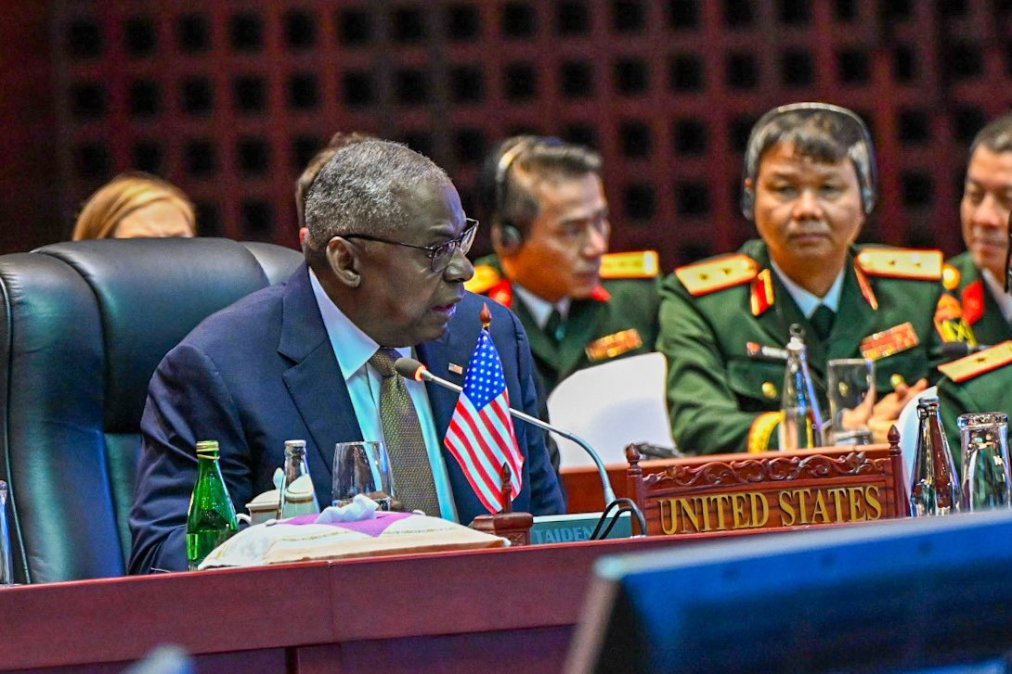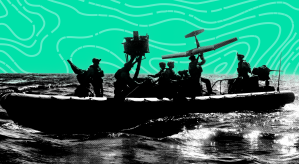How the first-ever DOD vision statement for Southeast Asia prioritizes technology

VIENTIANE, Laos — During his second full day of events at a summit for Asian military leaders and their international partners, U.S. Secretary of Defense Lloyd Austin unveiled a first-of-its-kind vision statement outlining the United States’ near-term plans for deepening cooperation and accelerating modernization with allies in the region.
Multiple inclusions in that new roadmap prioritize joint military technology-centered initiatives intended to advance the individual and collective capacity of the nations involved.
“The vision statement sets out DOD’s commitment to Southeast Asia and shows what we are doing, and will do, with our partners to make our vision a reality. It is future focused, including work in emerging fields, such as cybersecurity, which are key to a more prosperous and secure Southeast Asia,” a defense official told DefenseScoop on the sidelines of the summit.
The secretary and his delegation presented their U.S. Department of Defense Vision Statement for a Prosperous and Secure Southeast Asia on Thursday at the Association of Southeast Asian Nations (ASEAN) Defence Ministers’ Meeting Plus (ADMM-Plus).
In that document, policy officials highlight a range of actions the U.S. government has pursued since 2005 to invest and help enable the Indo-Pacific’s regional security architecture — including delivering more than $17 billion in foreign military sales to ASEAN member states and conducting 40 bilateral and multilateral exercises with Southeast Asian nations on an annual basis to drive interoperability and support readiness across roughly 30,000 forces involved.
Looking to the future, the vision statement confirms that America will work to promote the defense industrial capacity of its partners by leveraging government, academic and industry engagements to deepen collaboration and promote mutually beneficial investments that will enable a more robust and integrated defense industrial base.
“These activities may include components such as science and technology demonstrations, academic exchanges and workshops, and industry prize challenges,” according to the statement.
In another line of effort, the document commits to several pursuits to advance Southeast Asian nations’ capacity building in domain awareness — and their ability to respond to illegal intrusions and coercion across air, maritime, cyber space and information environments.
“The United States will enhance engagement with the ADMM Cybersecurity and Information Centre of Excellence (ACICE) in Singapore through programs including table-top exercises to identify capacity gaps in regional response to cyber threats and training courses for cyber security professionals,” officials wrote.
In the maritime domain, American forces plan to work with their partners in the region to expand capacity building programs — with an initial focus on using commercially available technologies such as drones, artificial intelligence and machine learning.
“The United States will enhance engagement with the ADMM Cybersecurity and Information Centre of Excellence (ACICE) in Singapore through programs including table-top exercises to identify capacity gaps in regional response to cyber threats and training courses for cyber security professionals,” according to the vision statement.
Further, the DOD also pledges to “work to develop targeted capabilities” by participating in ADMM-Plus expert working groups and related training exercises.
“In addition to the annual comprehensive calendar of bilateral and multilateral exercises undertaken alongside Southeast Asian allies and partners throughout the Indo-Pacific region, including BALIKATAN, COBRA GOLD, and SUPER GARUDA SHIELD, the United States will convene a second ASEAN-U.S. maritime exercise in 2025, subject to ADMM approval,” the document states.
Beyond Austin’s presentation of that new explicit path for America’s next moves with its closest Asian partners, the secretary on Thursday also engaged in bilateral talks with his top counterparts from India.
Speaking on the condition of anonymity to preview his plans ahead of these engagements, U.S. defense officials attending in his entourage briefed reporters on those talks Tuesday night.
They confirmed that the American and Indian military leaders were set to discuss defense industrial base cooperation, co-production and co-development efforts that they continue to make progress on, as well as ongoing efforts to facilitate undersea domain awareness related to the Indian Ocean.
On co-development and co-production plans, the senior defense officials told DefenseScoop in the briefing that the two militaries recently completed capabilities testing for Stryker armored vehicles and the Javelin weapon system — so they’d likely confer about those efforts and where they’ll go from here.
On his second day at the ADMM-Plus, Austin also participated in a multilateral meeting with his top counterparts from the Republic of Korea, Japan, Australia and the Philippines.
Leading up to that exchange, the senior defense officials told reporters that Austin would touch on a range of critical issues impacting the region — including China’s aggressive behavior against U.S. allies in and around the South China Sea, the conflict in Burma, and Russia’s war against Ukraine.
They added that they were expecting America’s likeminded partners to echo some of those same points and themes.
Notably, Austin’s top Chinese counterpart Defense Minister Adm. Dong Jun attended the summit on Thursday and was in the same room as the Pentagon chief more than once — after rejecting an invitation from the U.S. earlier in the week to connect on the ground there.
To close out the summit on Thursday night, Austin and other officials also attended a formal gala dinner, which included live entertainment and a gift exchange between the nations.






